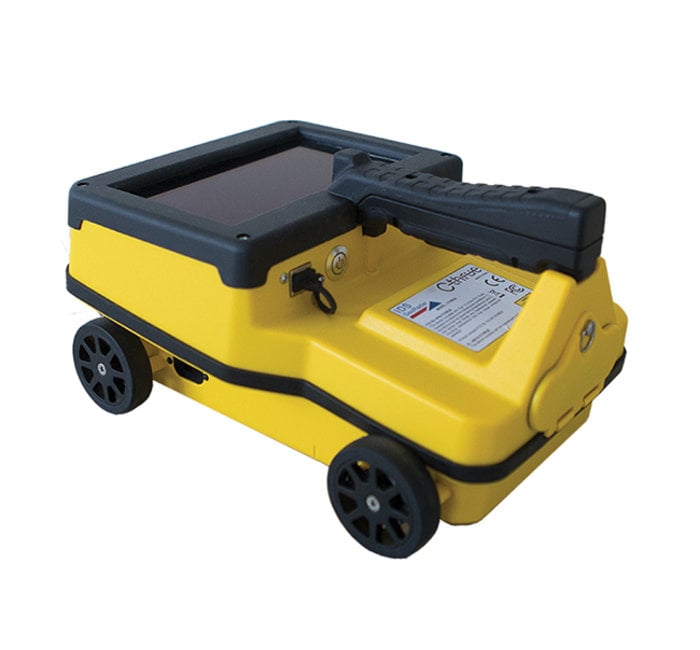Explore RainierGPR Service Areas for Professional Concrete Scanning
Explore RainierGPR Service Areas for Professional Concrete Scanning
Blog Article
Concrete Scanning: An Important Step In The Direction Of Ensuring Structural Stability and Safety
In the realm of building and construction and framework maintenance, the importance of concrete scanning can not be overemphasized. This thorough procedure holds the key to revealing prospective risks concealed underneath the surface of relatively solid frameworks. By utilizing advanced innovation and methods, concrete scanning functions as a crucial device in ensuring that the honesty and safety and security of buildings and bridges are supported to the highest possible standards. Nevertheless, past its surface-level implications, the role of concrete scanning expands far much deeper than meets the eye.
Value of Concrete Scanning
Concrete scanning plays an essential function in guaranteeing the architectural honesty and security of structures and infrastructure projects. By using innovative innovations such as ground-penetrating radar (GPR) and electro-magnetic induction, specialists can non-destructively examine concrete structures to detect prospective issues, gaps, embedded things, and reinforcement design. This procedure allows early discovery of abnormalities that can endanger the stability of a structure, protecting against pricey damages and making sure the safety of residents.
Concrete scanning is especially essential throughout the planning and construction phases of a job. Prior to boring, cutting, or coring into concrete, scanning aids identify the precise locations of rebar, post-tension cable televisions, and various other embedded elements, decreasing the danger of unintended hits that can lead to architectural weak points. Furthermore, concrete scanning aids in top quality control by confirming the thickness of concrete covers and finding any type of inconsistencies that may impact the overall sturdiness of the structure. Ultimately, buying concrete scanning solutions is not just a positive step to minimize threats however likewise a fundamental action towards maintaining the lasting security and stability of structures and framework.
Technology for Concrete Examination

Benefits of Early Detection
Timely detection of structural issues can considerably alleviate dangers and make certain the durability of construction jobs. By recognizing potential issues at an early stage in the building and construction procedure, stakeholders can take proactive steps to deal with problems before they rise into larger and much more costly troubles. Among the key advantages of early detection is the avoidance of architectural failings, which can present severe security dangers and lead to project hold-ups and economic losses.
Additionally, early discovery permits for prompt repair work and maintenance, which can aid extend the life-span of the framework. By attending to issues promptly, building and construction teams can avoid costly repairs or perhaps the requirement for premature replacement of structural elements. This proactive technique not only conserves money and time but additionally boosts the general safety and sturdiness of the construction task.
Furthermore, very early discovery can improve task planning and decision-making by offering stakeholders with beneficial understandings into the condition of the framework. Armed with this information, job managers can make educated selections regarding construction timelines, techniques, and products, causing more successful and effective project end results.
Guaranteeing Architectural Security
Ensuring the architectural stability of a building task is paramount to its security and durability. Architectural stability describes the capacity of a structure or facilities to preserve its kind and function under ecological problems and numerous tons. To attain this, complete analysis and surveillance of the framework are important. Concrete scanning plays an essential role in making sure architectural security by spotting possible issues such as gaps, delamination, or support rust that can compromise the integrity of the framework with time.
By using advanced scanning technologies like ground-penetrating radar (GPR) and electro-magnetic induction, building and construction experts can non-invasively examine concrete structures to recognize areas of issue beneath the surface area. This positive approach enables the early detection of weaknesses or flaws, enabling punctual repair services or reinforcement to protect against architectural failings.
Routine concrete scanning throughout different construction phases and throughout the life cycle of a framework can help keep its security, mitigate threats, and guarantee his comment is here the safety and security of passengers. By prioritizing architectural stability via concrete scanning, building jobs can enhance their durability and toughness, ultimately adding to greater safety and security and durability.
Preventing Important Failures
To safeguard versus catastrophic occasions, thorough tracking and aggressive upkeep are critical in averting important failings within structural frameworks. Finding possible concerns before they intensify is key to avoid architectural failures. Carrying out regular inspections, such as concrete scanning, can expose concealed defects like voids, cracks, or rust that might endanger the honesty of a structure. By using advanced scanning innovations like Ground Passing through Radar (GPR) or Concrete X-ray, designers can non-destructively assess the condition of concrete and determine powerlessness that call for support or repair - RainierGPR Service Areas.

Conclusion
To conclude, concrete scanning plays an important duty in ensuring architectural integrity and security by using advanced modern technology for early detection of prospective concerns. This aggressive strategy assists stop important failures and makes sure the security of structures. It is important to prioritize concrete examination as a typical practice to protect the long life and security of buildings and framework.
Concrete scanning plays a crucial role in ensuring the architectural integrity and safety and security of structures and infrastructure projects. Additionally, concrete scanning help in quality control by validating the thickness of concrete covers and discovering any type of inconsistencies that might impact the total toughness of the structure. Concrete scanning plays a vital role in making sure architectural security by finding potential problems such as voids, delamination, or support corrosion that can jeopardize the integrity of the framework over time.

In final thought, concrete scanning plays a vital role in guaranteeing structural integrity and safety and security by making use of sophisticated modern technology for very additional reading early detection of potential issues.
Report this page